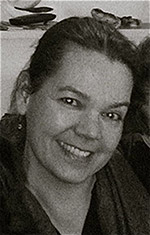Educator Conversations: Hubbard Street Dance Chicago
Editor’s note: This post is a part of a series of conversations between educators in the K-12 community. Educators will offer suggestions and answer questions about integrating UMS School Day Performances or the arts into classroom curriculum, as well as share advice on organizing a field trip to UMS. To volunteer to be a Teacher Lobby Moderator e-mail umsyouth@umich.edu. See other Educator Conversations here.
This week’s questions:
- How does a dance teacher prepare her students to see a UMS dance performance?
- How would I create a choreographic project inspired by Hubbard Street’s “One Thousand Pieces”?
- What are suggestions for cheap and quick (not fast food) Ann Arbor restaurants that will accommodate large groups?
This week’s moderator: Melissa Poli (Dance, Yoga, and Physical Education Teacher at Farmington High School)
Hi, my name is Melissa Poli, and I live in Ann Arbor with my husband, Andy, 14 year old daughter, Gabrielle and our part-time dog, Mina. I work at Farmington High School where I get to teach my two passions, dance and yoga. In my spare time, I attend dance concerts and festivals and lots of amazing yoga retreats in beautiful places with my family. And it’s probably obvious that my favorite quote is, “Let the beauty of what you love be what you do.” (Rumi).
How does a dance teacher prepare her students to see a UMS dance performance?
Lots of pre-performance discussions!!! This is a “must” in order to gain an appreciation and enthusiasm for the artists and their work. Just refer to ums.org for lots of background information and video links to guide your discussions. After viewing an excerpt from one or more of the dances, I then ask the following questions. These are referred to as “The 4 Step Critique”
- What do you see?
- How is the work organized?
- What does the dance communicate?
- How effective is the dance work?
While watching the performance (notebook in hand) students jot down the answers to these questions. We actually practice writing without looking down (so we don’t miss anything). This experience is so valuable in terms of recognizing the process of creating dances. If the overall dance works in their opinion or even if it doesn’t, at least they will be able to articulate why!
How would I create a choreographic project inspired by Hubbard Street’s One Thousand Pieces?
Or, if given the same task as choreographer Alejandro Cerrudo, how would we go about it? Would we make the same decisions? How would we interpret Marc Chagall’s American Windows?
When Alejandro Cerrudo was asked, How are you responding to Chagall’s America Windows? He replied, “The evening is inspired by the windows, but I’m not making them in dance. I might give you another perspective. You might look at the windows in a different way, after you see my piece. The windows aren’t about America. They’re about character, painting, cultural freedom, celebration.”
Related, here is my example America Windows choreography project. Students will divide into small groups and choose one panel to use as inspiration for their choreographic studies.
Each group will answer the following questions (look familiar?):
- What do you see? List everything, including the visual arts elements of line, shape, form, value/shading, texture, space, color.
- How is the work organized?
- What does the art communicate?
Students will then create dances based on the answers.
What are suggestions for cheap and quick (not fast food) Ann Arbor restaurants that will accommodate large groups?
My favorite place by far has been the Big Boy on Plymouth Road. We get the buffet in order to accommodate everybody. I collect the money ahead of time, including tips, and pay all at once. Call ahead to reserve. Or, If you have enough chaperons, the kids really like dividing up to visit various restaurants near State Street and Liberty Street.
What do you think? Share your responses or questions in the comments section below.








